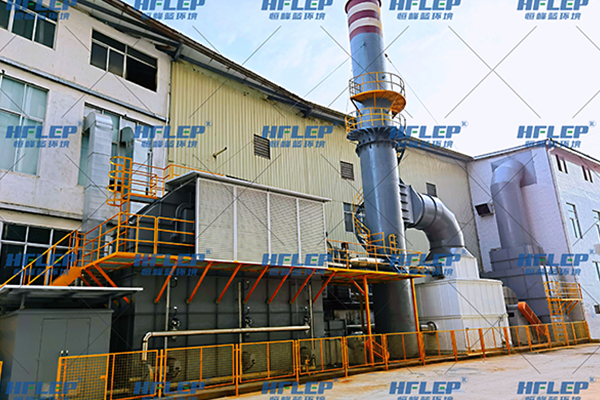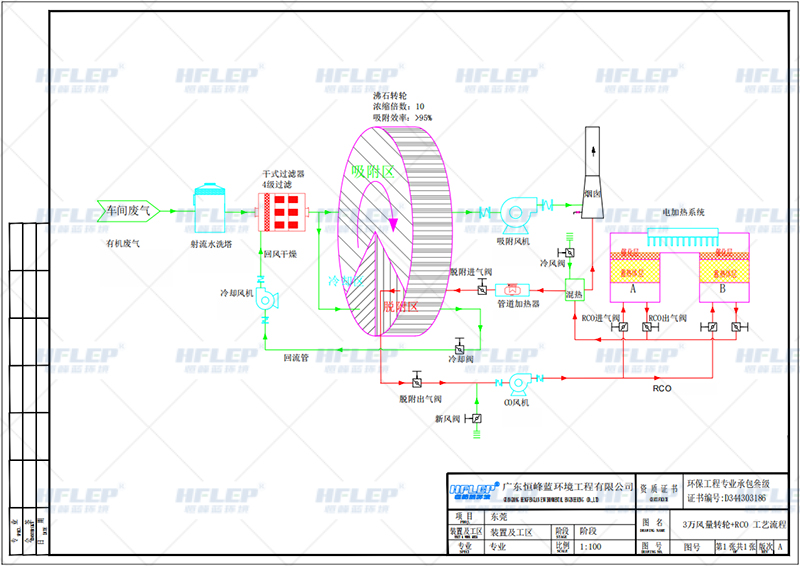Experienced Manufacturers
Production plant area of more than 10,000 square feet, more than 100 people construction team.
 Hotline
Hotline

Industry Introduction
Rubber industry is a very large field industry, the common type of rubber is mainly divided into natural rubber and synthetic rubber two kinds. Natural rubber is processed from rubber trees, rubber grass and other plants to extract gum; synthetic rubber is obtained by polymerisation of various monomers. Rubber products are widely used in all aspects of industry and life.
Pollution Hazards
Most of the exhaust pollutants in the rubber exhaust are from the polymerisation of raw materials in the rubber production line and the heat treatment process, which may contain a large amount of styrene, benzene, xylene, butanone, aldehyde, sulphur compounds, nitrogen oxides and other organic exhaust and fumes, and accompanied by a certain temperature diffusion to the entire workshop and the surrounding areas of the plant boundary, which is a more serious pollution of the exhaust gas.
Overview of the treatment programme
For rubber exhaust VOCs treatment technology, now in line with environmental emission requirements, and play a role in reducing costs and efficiency of the treatment technology, is the use of combustion method of treatment technology is more economical and energy-saving. It is recommended to use: wet jet washing (multi-pipe) + dry filter + wind reduction and thickening + RCO catalytic combustion combination of governance, governance can meet the emission requirements of the standard!
Process flow

Wet jet washing (multi-tube) + dry filtration + zeolite rotor adsorption concentration + catalytic combustion process (integrated system) process treatment. Organic waste gas is collected through the pipeline, and enters the pretreatment wet jet tower to remove paint dew, acidity and particles of purification. After purification, the gas is introduced into the dry filter to remove particles and zeolite adsorption of hazardous substances, and the organic waste gas is then sent to the zeolite adsorption bed device, and the VOCs in the waste gas is absorbed by the zeolite and then discharged to the atmosphere in compliance with the standards. When the zeolite adsorption bed is saturated by electric heating at high temperature (100-180℃C) desorption of VOCs substances, desorption of high concentration of organic waste gas directly into the RCO catalytic chamber, through the heat storage ceramic body heated to 250-300 degrees, and then accelerated oxidation of high concentration of waste gas through the precious metal, in ( 300-380℃) high temperature purification and oxidation into harmless carbon dioxide (CO2) and water vapour ( H20) and discharged to the atmosphere in compliance with the standard.
Other treatment process technology
Low concentration and small air volume rubber waste gas can be used: spray tower, uv photolysis purifier, activated carbon adsorption and other single or multiple combinations of processes for treatment;
High concentration of small air volume rubber waste gas can be used: pretreatment + zeolite molecular sieve + catalytic combustion, pretreatment + zeolite molecular sieve + RTO regenerative incinerator, a single catalytic combustion device or a single RTO regenerative incinerator and so on;
High concentration and large air volume rubber waste gas can be used: pretreatment + zeolite rotor concentration + catalytic combustion or pretreatment + zeolite rotor concentration + RTO thermal storage incinerator and so on.
Reason for choice

Production plant area of more than 10,000 square feet, more than 100 people construction team.

A number of engineers and technicians, most of whom have more than 10 years of experience and have worked on numerous projects.

Adoption of the latest domestic and international treatment technology, with high treatment efficiency.

According to the actual needs of the project, free to customise the corresponding exhaust gas treatment solutions, all regions of the country package to meet the emission standards.

Passed the third level of construction enterprise qualification and a number of technical patents...

1000+ project experience, more than 100 industry partners, complete environmental protection qualification.
Contact - Ways
Contact information
Catalytic combustion machine is a dry filter + adsorption de...

Activated carbon adsorption and desorption + CO catalytic co...

Zeolite rotor concentration + RTO regenerative incinerator c...

Zeolite rotor concentration + CO catalytic combustion proces...

CO catalytic combustion + TO direct combustion furnace proce...

For low concentration and low air volume of waste gas treatm...


Industry Introduction
Rubber industry is a very large field industry, the common type of rubber is mainly divided into natural rubber and synthetic rubber two kinds. Natural rubber is processed from rubber trees, rubber grass and other plants to extract gum; synthetic rubber is obtained by polymerisation of various monomers. Rubber products are widely used in all aspects of industry and life.
Pollution Hazards
Most of the exhaust pollutants in the rubber exhaust are from the polymerisation of raw materials in the rubber production line and the heat treatment process, which may contain a large amount of styrene, benzene, xylene, butanone, aldehyde, sulphur compounds, nitrogen oxides and other organic exhaust and fumes, and accompanied by a certain temperature diffusion to the entire workshop and the surrounding areas of the plant boundary, which is a more serious pollution of the exhaust gas.
Overview of the treatment programme
For rubber exhaust VOCs treatment technology, now in line with environmental emission requirements, and play a role in reducing costs and efficiency of the treatment technology, is the use of combustion method of treatment technology is more economical and energy-saving. It is recommended to use: wet jet washing (multi-pipe) + dry filter + wind reduction and thickening + RCO catalytic combustion combination of governance, governance can meet the emission requirements of the standard!
Process flow

Wet jet washing (multi-tube) + dry filtration + zeolite rotor adsorption concentration + catalytic combustion process (integrated system) process treatment. Organic waste gas is collected through the pipeline, and enters the pretreatment wet jet tower to remove paint dew, acidity and particles of purification. After purification, the gas is introduced into the dry filter to remove particles and zeolite adsorption of hazardous substances, and the organic waste gas is then sent to the zeolite adsorption bed device, and the VOCs in the waste gas is absorbed by the zeolite and then discharged to the atmosphere in compliance with the standards. When the zeolite adsorption bed is saturated by electric heating at high temperature (100-180℃C) desorption of VOCs substances, desorption of high concentration of organic waste gas directly into the RCO catalytic chamber, through the heat storage ceramic body heated to 250-300 degrees, and then accelerated oxidation of high concentration of waste gas through the precious metal, in ( 300-380℃) high temperature purification and oxidation into harmless carbon dioxide (CO2) and water vapour ( H20) and discharged to the atmosphere in compliance with the standard.
Other treatment process technology
Low concentration and small air volume rubber waste gas can be used: spray tower, uv photolysis purifier, activated carbon adsorption and other single or multiple combinations of processes for treatment;
High concentration of small air volume rubber waste gas can be used: pretreatment + zeolite molecular sieve + catalytic combustion, pretreatment + zeolite molecular sieve + RTO regenerative incinerator, a single catalytic combustion device or a single RTO regenerative incinerator and so on;
High concentration and large air volume rubber waste gas can be used: pretreatment + zeolite rotor concentration + catalytic combustion or pretreatment + zeolite rotor concentration + RTO thermal storage incinerator and so on.